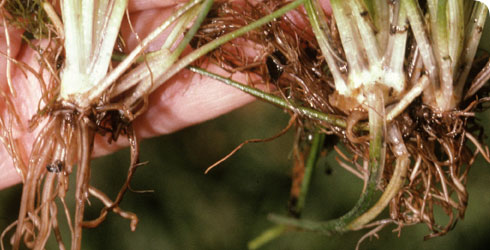Biology and behaviour
Biology
Isoetes species do not produce flowers, and instead reproduce by spore production, like ferns.
The leaves of quillworts are attached to a swollen base several millimetres wide which functions as a bulb-like, underground corm that can withstand occasional drying out in species found in seasonal pools or intermittent streams - a few species can form large, spreading mats. This swollen leaf base also contains male and female sproangia (where the spores are produced) protected by a thin, transparent covering.
The plants are heterosporous, meaning they produce 2 different sizes and types of spores, large megaspores and smaller microspores.
Behaviour
The submerged lake bottoms, where many species of Isoetes are found, are habitats with less carbon-dioxide than terrestrial habitats. Many Isoetes species, as well as other aquatic plant species, have therefore developed a type of photosynthesis more commonly found in desert plants or tropical epiphytes, known as crassulacean acid metabolism, to increase their ability to fix carbon.
